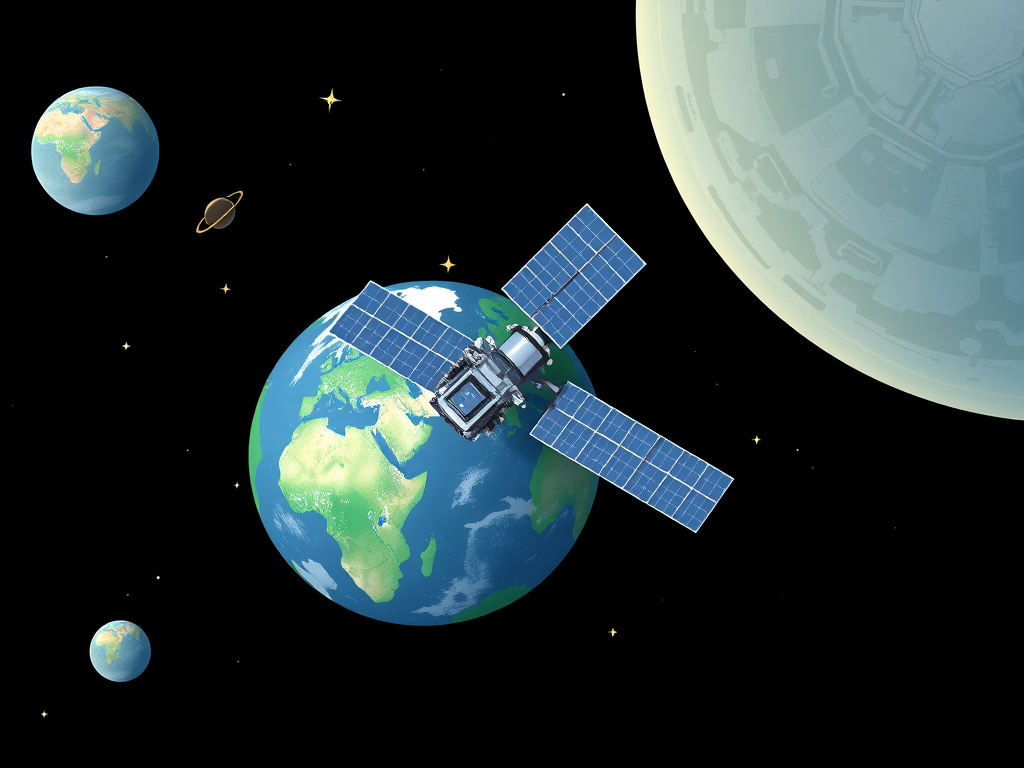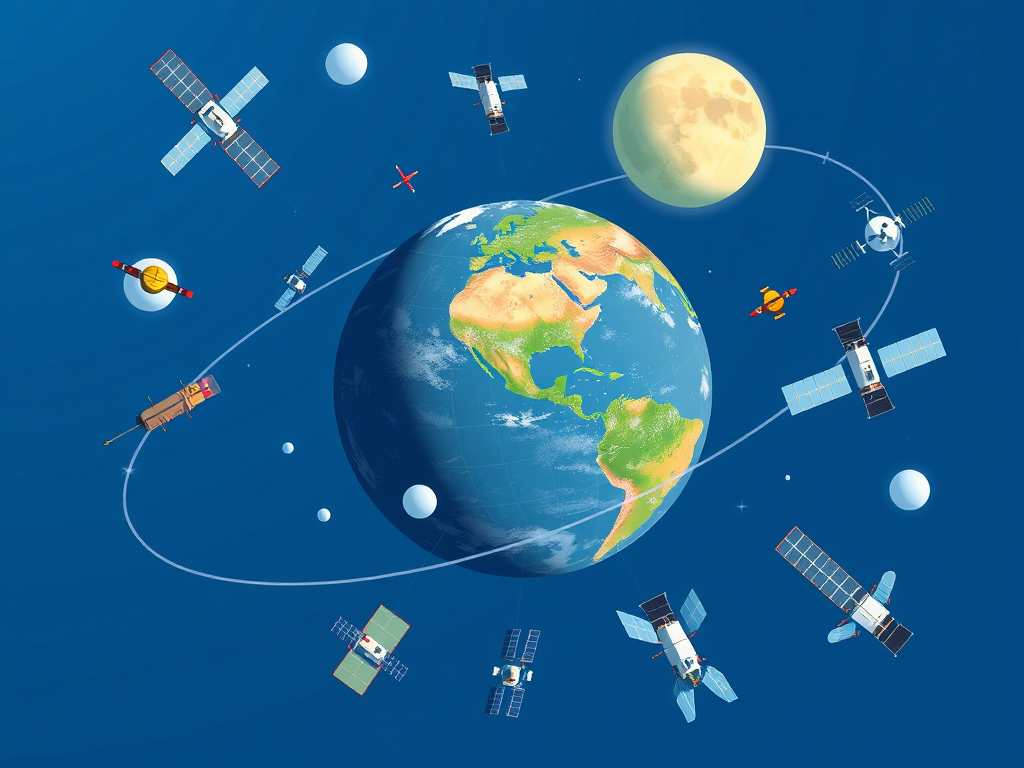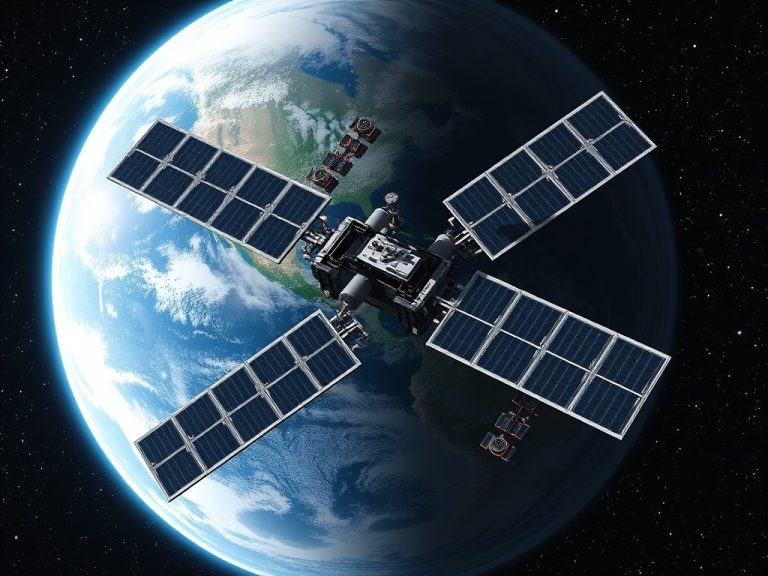
Satellite internet is a way to connect to the internet using satellites orbiting the Earth. This technology is especially beneficial in remote or rural areas where traditional internet cables, like fiber or DSL, are not available. In this article, we’ll explain how satellite internet works in a clear and simple way.
1. What is a Satellite?
Satellites are objects that orbit the Earth. The satellites used for internet are positioned about 22,236 miles above the Earth in a special area called geostationary orbit. This means they stay in the same place in the sky relative to the Earth’s surface, allowing them to provide consistent internet coverage to specific areas.
2. Main Parts of Satellite Internet
Satellite internet consists of several key components that work together to provide a connection. Here’s a closer look at each part:
a. Satellite Dish
A satellite dish is a large, round antenna that captures signals from the satellite. It is typically installed on the roof of a building or on a pole in an open area. The dish must have a clear view of the sky to connect to the satellite effectively. When you want to access the internet, the dish sends your requests to the satellite and receives data back.
b. Modem
The satellite dish is connected to a modem, which is a device that converts the signals from the satellite into a format that your computer or device can understand. The modem also sends your internet requests back to the satellite. Think of the modem as a translator between you and the satellite.
c. Satellite
When you enter a web address or click on a link, your request travels from your modem to the satellite dish. The dish sends this request up to the satellite in orbit. The satellite then relays the request to your internet service provider (ISP) on the ground. This step is crucial because the ISP is connected to the larger internet.
d. Internet Backbone
The internet backbone is a network of high-capacity data routes that carry internet traffic across the globe. Your ISP connects to this backbone, enabling it to process your requests and retrieve the information you need, such as websites, videos, or emails.
e. Returning Information
Once the ISP has the information you requested, it sends it back to the satellite. The satellite then relays this data back to your dish, which sends it to your modem. Finally, the modem delivers the information to your device, completing the data exchange.
3. Speed and Delay
One of the main challenges with satellite internet is latency, or delay. Because signals must travel such a long distance to and from the satellite, there can be a noticeable wait time. This delay can affect activities like online gaming or video calls, where quick responses are essential. However, new technologies are being developed to help reduce this delay.
a. Download and Upload Speeds
Satellite internet speeds can vary widely depending on the provider and the technology used. Many satellite internet services offer download speeds ranging from 25 Mbps to 100 Mbps, which is sufficient for browsing the web, streaming videos, and using social media. However, upload speeds tend to be lower, often between 3 Mbps and 25 Mbps. This means uploading files or videos can take longer compared to downloading.
4. Types of Satellite Internet
There are two main types of satellite internet: geostationary and low Earth orbit.
a. Geostationary Satellite Internet (GEO)
Most traditional satellite internet services use geostationary satellites. These satellites provide broad coverage over large areas but can suffer from higher latency due to their distance from the Earth. This type of service is often used in rural areas where other forms of internet are not available.
b. Low Earth Orbit Satellite Internet (LEO)
Emerging technologies are utilizing low Earth orbit satellites, which are much closer to the Earth—typically a few hundred miles up. This proximity significantly reduces latency and improves the overall speed and quality of the internet connection. Companies like SpaceX (with their Starlink service) are leading the way in this technology, aiming to provide faster and more reliable internet to users worldwide.

5. Pros and Cons of Satellite Internet
Like any technology, satellite internet has its advantages and disadvantages. Here’s a closer look at both:
Advantages
- Wide Coverage: Satellite internet can reach remote areas where traditional wired connections are unavailable. This makes it a great option for rural homes, farms, and cabins.
- Easy Setup: Installing satellite internet is relatively straightforward. As long as there is a clear view of the sky, the service can be set up quickly.
- Accessibility: It can be a lifesaver for people in areas with little to no access to other forms of internet, allowing them to connect to the digital world.
Disadvantages
- Higher Delay: The long distance that signals must travel can cause noticeable delays, which can be frustrating for activities that require real-time interaction, such as gaming or video chatting.
- Weather Sensitivity: Heavy rain, snow, or storms can disrupt satellite signals. This can lead to temporary loss of service or slower speeds during bad weather.
- Data Limits: Many satellite internet plans come with data caps, meaning there is a limit to how much data you can use each month. Exceeding this limit can result in slower speeds or extra charges.
6. The Future of Satellite Internet
As technology advances, the future of satellite internet looks promising. With the development of low Earth orbit satellites, users can expect faster speeds and lower latency. Companies are continually working to improve their services, making satellite internet a more viable option for even more people.
Conclusion
In summary, satellite internet is an effective way to connect to the internet, especially in areas where other options are limited. By understanding how it works, you can appreciate both its benefits and challenges. As technology continues to evolve, satellite internet will likely become even faster and more reliable, helping to bridge the digital divide and connect people around the world. Whether you live in a bustling city or a remote mountain cabin, satellite internet can help you stay connected.






